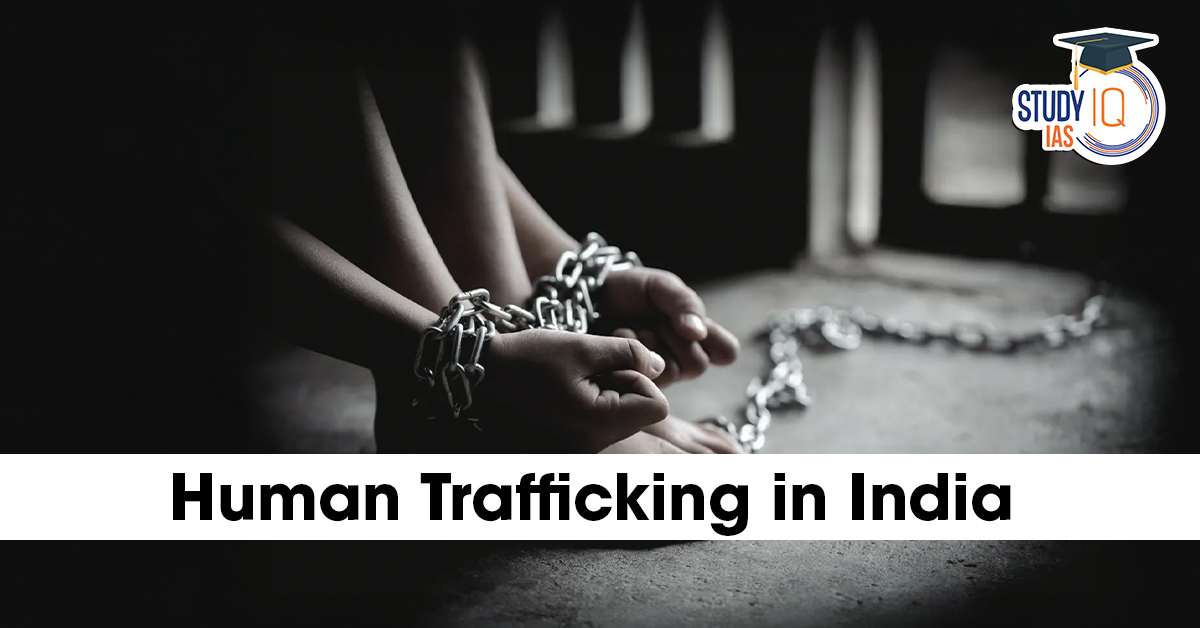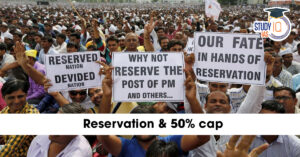Table of Contents
Context: Two major human trafficking attempts have been foiled in West Bengal, underscoring the grim reality that this heinous crime continues to thrive despite ongoing efforts to eradicate it in India.
| Trafficking Data |
Trafficking data (2018–2022) shows persistent prevalence:
|
Root Causes of Human Trafficking
- Poverty and Unemployment: Widespread economic deprivation and lack of local employment opportunities.
- Eg., Closure of tea gardens in Darjeeling, Kalimpong, and Dooars has left locals without income.
- Deceptive Recruitment Practices: Lure of lucrative jobs in garment factories, domestic work, or gold manufacturing units.
- False promises of better living conditions.
- Geographical Location & Border Vulnerability: Porous borders and weak surveillance result in cross-border trafficking.
- Eg., West Bengal’s proximity to Nepal, Bhutan, and Bangladesh facilitates cross-border trafficking.
- Weak Law Enforcement & Data Concealment: Underreporting of cases due to fear, social stigma, and administrative obfuscation.
- Traffickers are adapting tactics to avoid detection.
- Social and Gender Vulnerabilities: Women and children from marginalised communities are disproportionately targeted.
- Patriarchal norms and lack of education heighten risk.
- Disaster and Pandemic Impact: COVID-19 reduced livelihoods, increasing susceptibility to risky migration offers.
- Natural disasters in the region displace communities, creating fresh vulnerabilities.
Consequences of Human Trafficking
- Loss of Freedom and Exploitation: Victims forced into bonded labour, sex work, or hazardous industries.
- Deprivation of wages, legal rights, and dignity.
- Physical and Mental Health Damage: Exposure to violence, abuse, malnutrition, and lack of healthcare.
- Long-term trauma and mental health disorders.
- Breakdown of Families and Communities: Migration under coercion disrupts family structures.
- Loss of working-age members impacts local economies.
- Criminal Network Expansion: Profits from trafficking fund organised crime.
- Deepens corruption among local enforcement and border officials.
- Undermining of State Legitimacy: Poor governance and weak victim protection erode trust in the administration.
- Inter-generational Impact: Children of victims often grow up in poverty, repeating the cycle.
Way Forward
- Address Economic Roots: Promote local job creation in agro-processing, tourism, and handicrafts.
- Introduce livelihood schemes targeted at vulnerable districts.
- Strengthen Law Enforcement & Data Transparency: Mandatory crime data disclosure with independent audits.
- Special anti-trafficking units trained in victim-sensitive approaches.
- Border & Placement Agency Regulation: Monitor and license recruitment agencies.
- Enhance border surveillance with technology and community patrols.
- Community-Based Prevention: Empower local youth clubs, self-help groups, and NGOs for sensitisation drives.
- Victim Rehabilitation & Protection: Provide safe housing, legal aid, counselling, and vocational training.
- Ensure reintegration support for rescued victims to prevent re-trafficking.
- Use of Technology: Deploy GPS tracking, digital ID verification, and AI-based alerts in transport hubs.
- Maintain a centralised database of missing persons and trafficking patterns.


 Geo-tagging of Buildings During Upcoming...
Geo-tagging of Buildings During Upcoming...
 Gender Gap in Educational Expenditure in...
Gender Gap in Educational Expenditure in...
 Reservation and 50% Cap: Constitutional ...
Reservation and 50% Cap: Constitutional ...

























